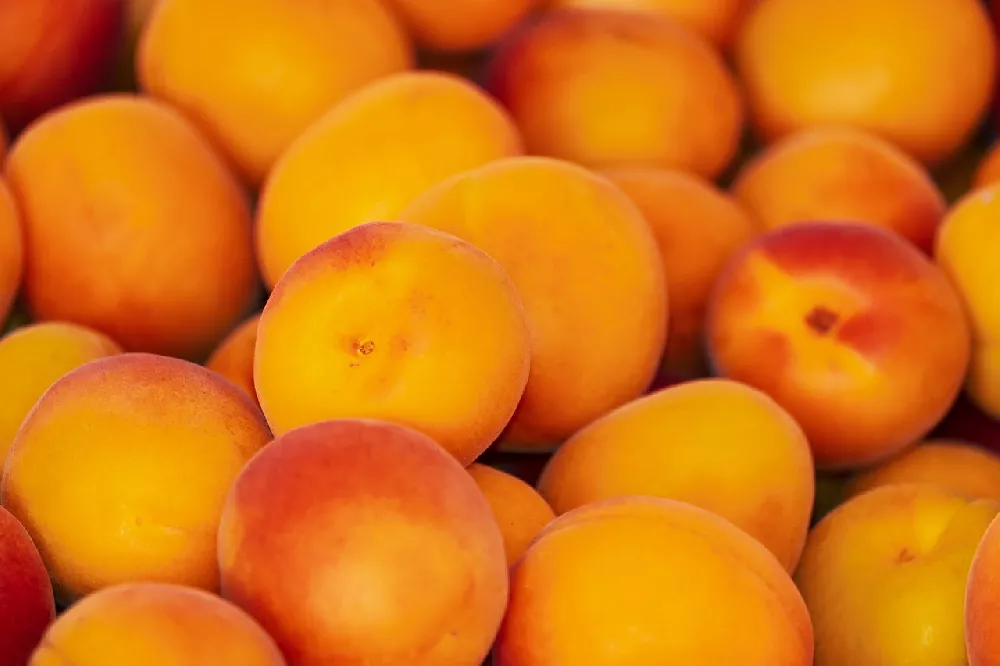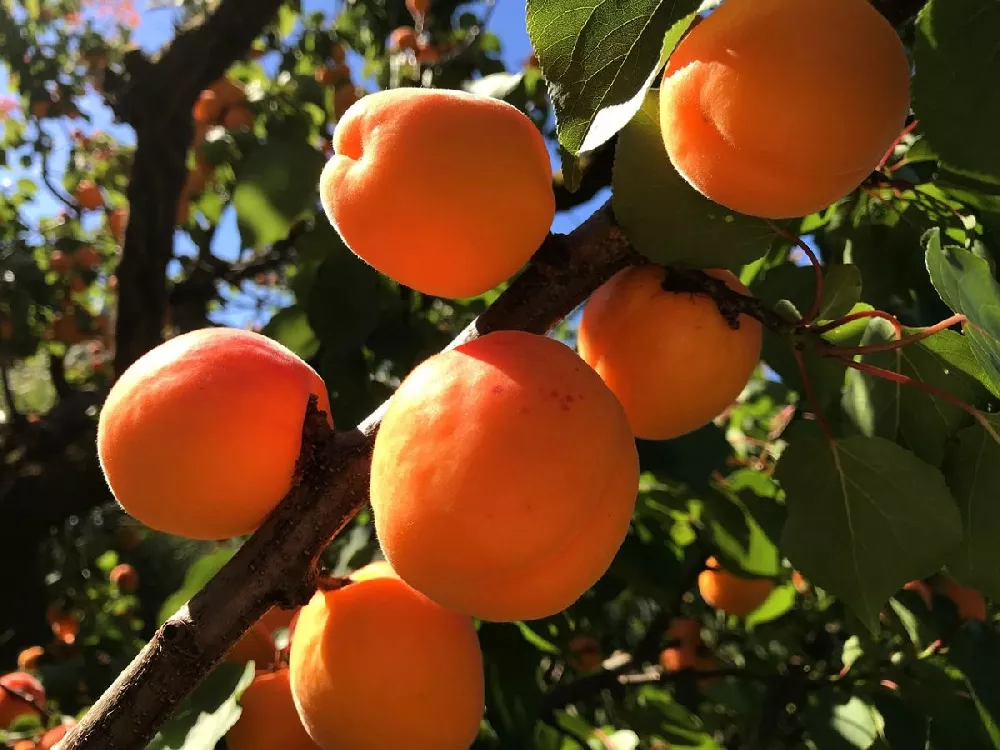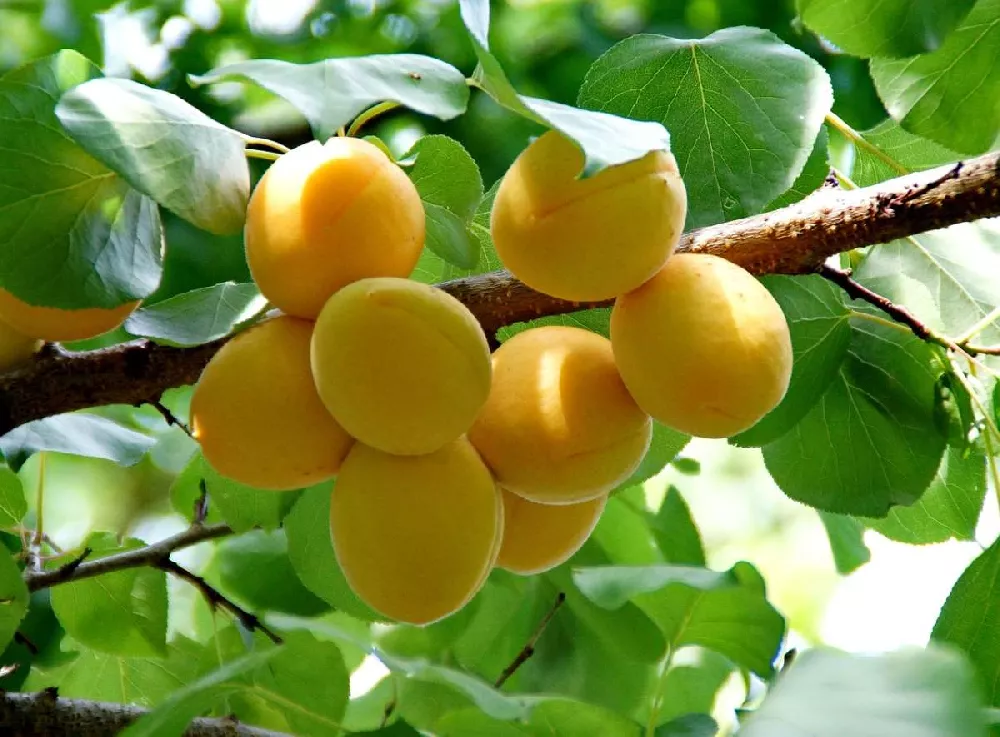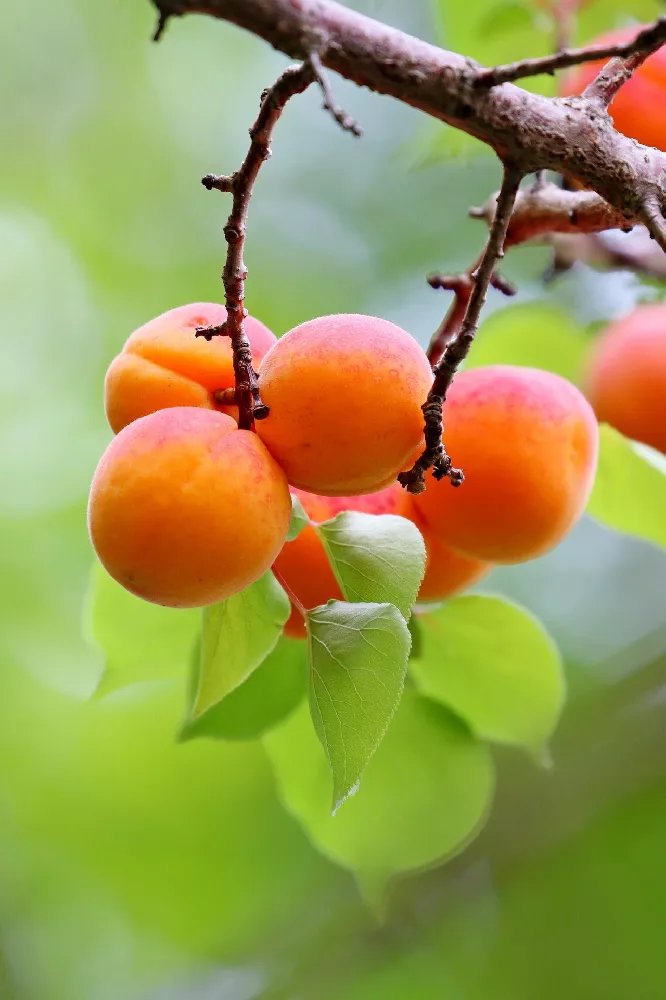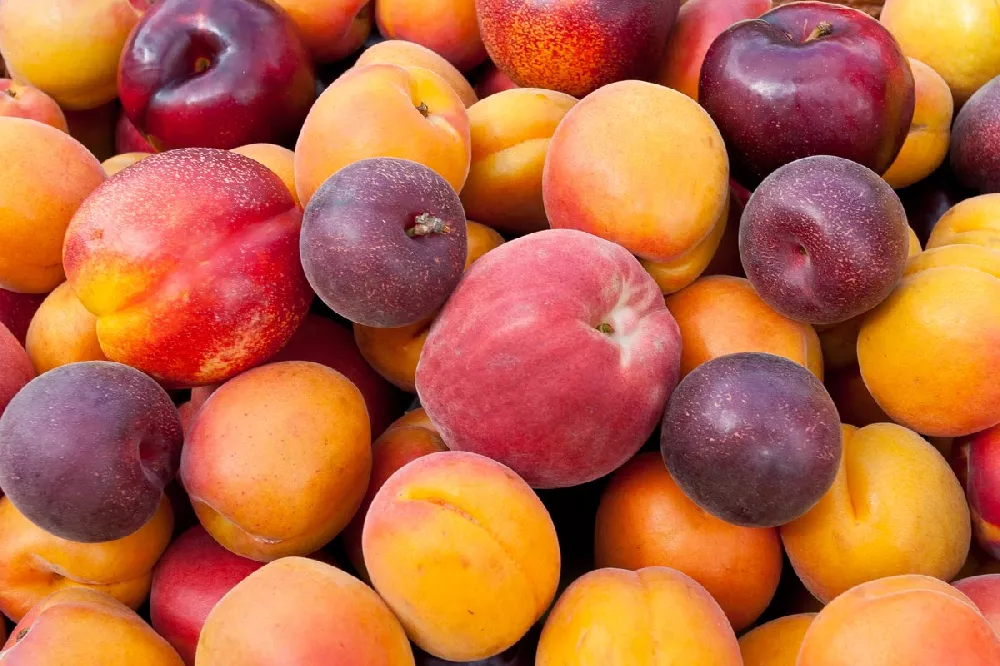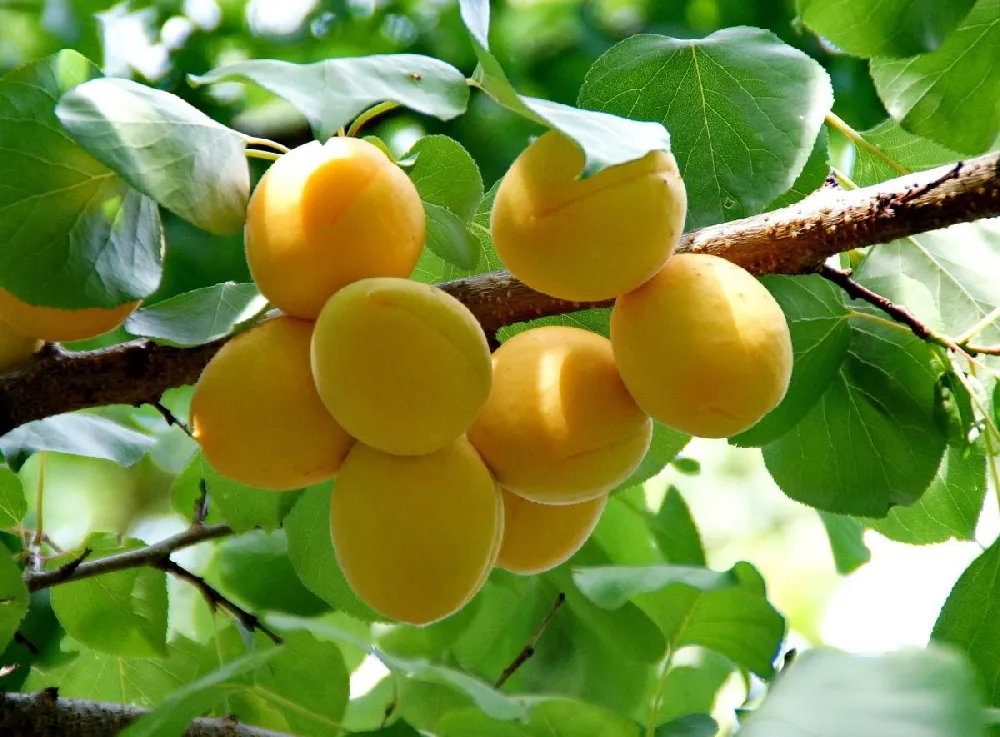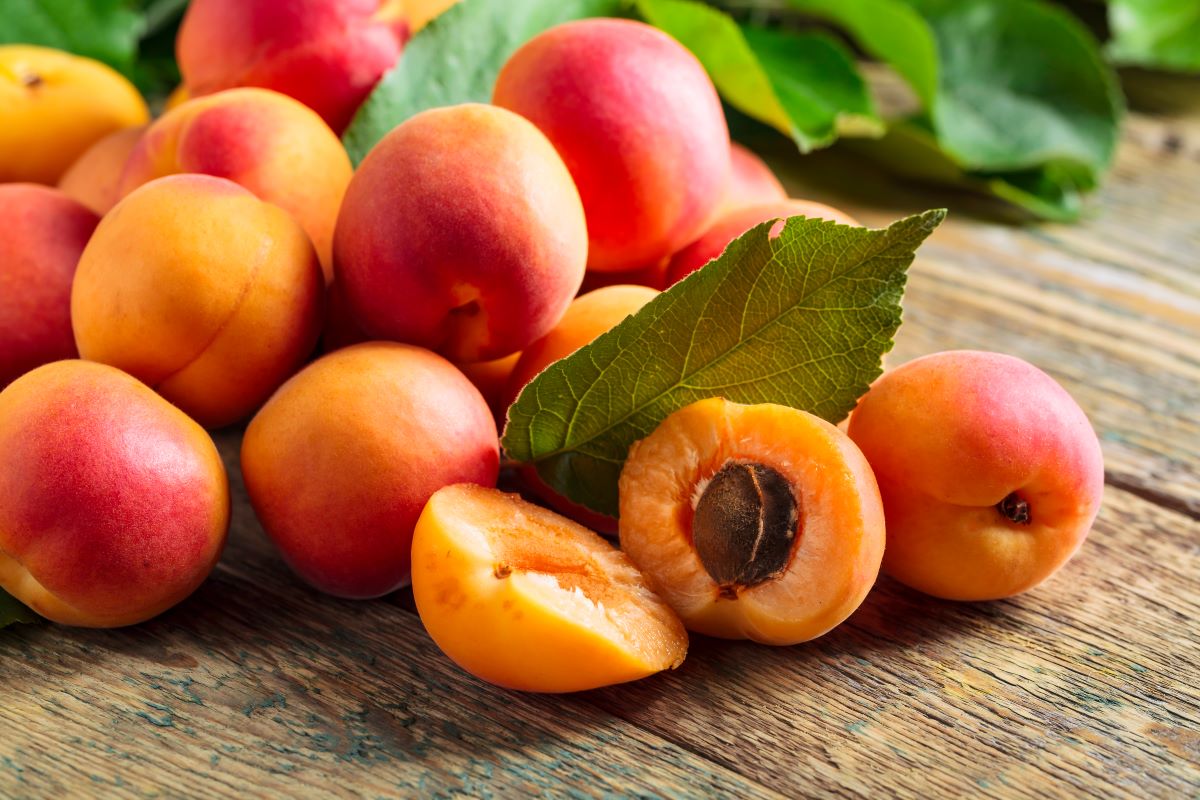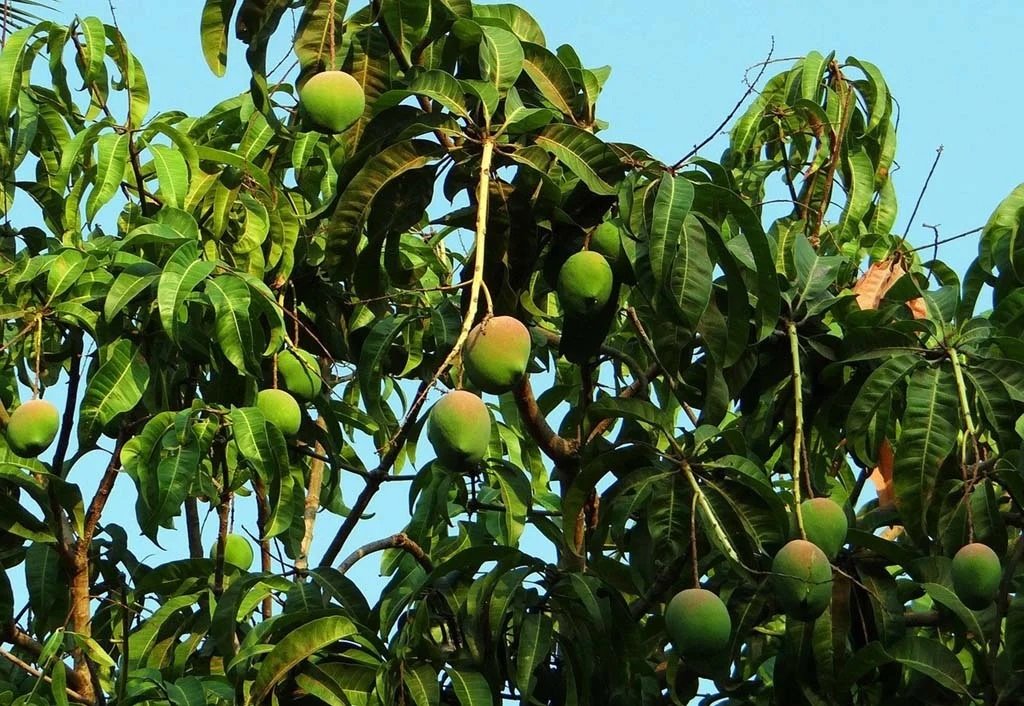- Home >
- Apricot Trees
Apricot Trees for Sale - Buying & Growing Guide
6 Results
Apricot Trees – Buying & Growing Guide
Apricot trees are small trees that grow well in warm climates, but most are also cold hardy, making them suitable for growing in most western regions. They yield fuzzy-skinned peachy-orange colored stone fruits, which are sweet and juicy.
Native to northeastern China, apricot trees grow well in most of the continental U.S. Their fruit is often found in dried form in the grocery store, but you haven’t lived until you’ve eaten a fresh apricot off a tree in your backyard. Requiring a minimum of care, they offer a big pay-off at harvest time.
How to Grow Apricot Trees
How to plant apricot trees
Plant your apricot tree in a sunny location (six to eight hours of sun a day is best) with well-draining soil that contains a high amount of organic material. Apricots are prone to damage during late frosts, so choose a site that is protected from wind and preferably on higher ground.
Dig a hole twice as wide and deep as your sapling’s root ball. Before planting, soak the root ball in a bucket of water for several hours. Tease out any roots encircling the root ball as they can eventually girdle the tree and kill it. Mix some peat moss or other organic matter into the bottom of the hole, and plant the sapling so the top of the root ball is even with ground level.
Backfill the hole (replace the dirt you removed) with the compost-enriched soil, and tamp down firmly to eliminate air pockets. Water the sapling generously. Create a low berm around the trunk a few feet away from it so that water stays near the root zone until it can seep into the ground.
How to achieve maximum results
Selecting the right cultivar is an important aspect of growing apricots. You can choose dwarf, semi-dwarf, or standard, for example, to control the height. Some apricot varieties are more cold-hardy than others, so know what USDA hardiness zone you’re in and choose the cultivar accordingly. Fortunately, most apricot trees are self-pollinating, so you won’t need to plant more than one variety to have a good harvest.
How to Care for Apricot Trees
Watering and nutrients
Water your newly-planted apricot tree thoroughly every week. Once you see robust new growth, you can taper off the watering sessions. Mature apricot trees need about one inch of water every ten days, so if they’re not getting that amount from rain, give your tree some supplemental water.
Don’t fertilize your apricots the first year you have them. In fact, refrain from fertilizing your trees until they start bearing fruit. Once they mature, fertilize them in the spring after the buds start growing with a high-nitrogen fertilizer, or with a general fertilizer formulated for fruit trees. Don’t fertilize after July 1, as the trees need to start slowing their growth to prepare for winter.
Pollination
Apricot trees are self-fruitful, so you should have a harvest even if you only have one tree—although your trees will be more fruitful if you have more than one variety. Bees and other nectar-seeking insects are the tree’s primary pollinators. You can encourage pollination by planting pollinator-friendly flowers in the area around your apricot trees.
Pruning
Prune in the spring while the tree is still dormant. First, remove diseased and dead branches, and any branches that rub against each other. Always try to prune to a bud, making a clean, angled cut about one quarter inch away from the bud. Then thin out the branches, working toward an open shape that allows light and air into the tree. You want three to five main scaffold branches circling the tree to create a well-balanced form.
Pests, diseases, and animals
Apricot trees may be susceptible to bacterial canker, bacterial leaf spot, and brown rot, which is fungal. To avoid these, keep your tree well-pruned and clean up any debris around the trunk. Your county extension agent can give you an overview of what diseases are common in your region and how to best handle them.
Insects that may bother your trees include aphids, twig and trunk borers, Japanese beetles, and leafrollers. Controls include horticultural spray and general purpose insecticides. Encourage beneficial insects like ladybugs, which feed on aphids, by planting pollinator-friendly flowers nearby.
Rodents such as rats and squirrels may show an interest in your fruit trees. Try tying fluttering streamers in the tree to deter them. A metal collar around the trunk may also keep these rodents from accessing the tree.
Harvesting
Apricot trees will start bearing fruit three to five years after you’ve planted them. Unlike some fruit, apricots don’t ripen once they’ve been picked, so wait until the fruit is sweet and juicy on the tree before you pick it. The apricots should come off the stem easily. Harvest season is June through August, depending on the variety of your apricot tree.
Light
Apricot trees require plenty of sun to produce the energy to grow fruit. They should be planted in a position that will allow several hours of sunshine each day, especially when the trees are young and small and might fall into the shade of walls, fences, or other trees.
Temperature
Most varieties of apricot tree are cold hardy, but they are early bloomers, and so, the flowers can be adversely affected by late frosts. If you are in a region that is likely to experience late frosts, then you will need to take precautions.
You can erect canes around the tree and cover it with polyurethane or horticultural fleece, as this will insulate the flowers against frost while the canes will ensure that the fabric doesn’t come into contact with the tree. The fabric would need to be kept on overnight but be removed during the day to allow for pollination and for sunlight to reach the foliage. Alternatively, plant your apricot trees on higher ground where frost is less likely to affect them, or seek out the hardiest varieties of apricot tree, which are better suited to cold climates.
Apricot trees prefer to grow in climates with warm springs and summers, so they grow well in most western regions.
Common Problems
Mealybugs, Aphids, and Scale
These pests feed on the sap of the tree, robbing it of vital nutrients and potentially stunting growth in severe cases. These pests can be quite hard to spot as they typically hide on the underside of leaves, but they commonly affect apricot trees so you should routinely check your tree for these pests as an infestation caught early will be much easier to deal with.
Typically, though, you will notice symptoms of sap-feeding pests before you spot the pests themselves. Signs of a potential pest problem include yellow patches on leaves, leaf loss, or sticky residue on foliage.
A good way to prevent these pests taking up residence on your plant is to spray it with a neem oil mixture every few weeks. Neem oil is a natural pesticide that works by preventing pests from being able to feed, thereby eventually killing them. If you find an infestation of sap-feeding pests, you can try to remove them by spraying them off with a powerful water hose. This can be repeated daily until the infestation is under control.
Mites
Mites are another type of sap-feeding pest, but they require a different approach as they present themselves differently. They are actually arachnids and leave tiny webs on the foliage while they suck the nutrients from it. The mites are almost invisible to the naked eye, so you are more likely to encounter the web before you notice the mites.
An apricot tree suffering from a mite problem will usually have spotted leaves and premature leaf loss. You can prevent and control mite infestations by spraying the tree with bursts of water throughout summer. Mites also prefer low humidity so maintaining high humidity can help to prevent them.
Caterpillars
Caterpillars are a common pest on both the foliage and the fruit of an apricot tree. They mine their way through leaves, leaving them damaged and unattractive and ruin the fruit for human consumption.
The best way to treat a caterpillar problem is with Bacillus thuringiensis. This is a bacterium that works as a poison on caterpillars and is highly effective. However, in order to use it successfully, it must be applied every few days until a caterpillar problem has been controlled.
Fungal Disease
It is not unusual for apricot trees to suffer from fungal diseases. Among the most common are powdery mildew and European brown rot. Both of these diseases are caused by fungus, though they present with different symptoms.
Powdery mildew causes furry white spots to appear on young fruit, which is actually mold. European brown rot, however, causes the apricots to actually rot and turn brown while they are still attached to the tree.
Fungal diseases thrive in moist conditions, so the best way to prevent these problems is by ensuring good air circulation and limiting the opportunity for damp to prevail. Plant your trees far enough apart so that air can circulate between them and thin out the trees to create better air circulation between branches and fruits. Remove any infected parts of the tree as soon as you spot it and dispose of them carefully.
